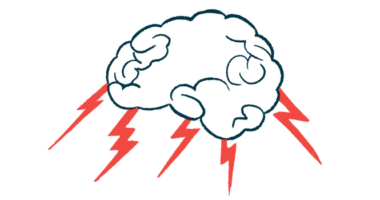Parkinson’s Patients Show Reduced Workforce Participation Even Before Diagnosis, Study Finds

Parkinson’s patients show less ability to participate in work life even in the early stages before they are diagnosed with the disease, a study shows.
In combination with biochemical and genetic biomarkers, this finding may help identify patients at risk of developing this progressive neurodegenerative disease before motor symptoms occur, the researchers suggest.
The study, “Reduced workforce participation 5 years prior to first Parkinson’s disease sick-leave,” was published in the journal NPJ Parkinson’s Disease.
Non-motor symptoms, such as depression and anxiety, are recognized as part of the prodromal (early) phase of Parkinson’s disease. These manifestations often arise approximately 10 to 20 years prior to the onset of motor symptoms.
At least 30 percent of people who have Parkinson’s are of working age, according to the study.
“At the group level, persons who later will get diagnosed with PD [Parkinson’s disease] have been reported to exhibit higher medical expenses and a lower employment rate up to 8 years prior to the diagnosis in comparison with controls,” the researchers wrote.
However, it is not fully understood how early non-specific motor and non-motor symptoms can affect workforce participation during prodromal and early Parkinson’s disease.
Researchers in this study aimed to investigate whether individuals eventually diagnosed with Parkinson’s exhibit increased sickness absences one, two, and five years prior to a first sick-leave episode attributed to the disease.
They reviewed clinical records of all sick-leave absences that exceeded 14 days in Sweden between 2008 and 2014. They identified a total of 537 incident Parkinson’s disease sick-leave cases and 537 sick-leave cases of other diagnoses, which were used as controls. Most Parkinson’s sick-leave cases were men (63.7%), and the median age was 59 years.
A larger portion of the Parkinson’s sick-leave cases, compared with sick-leave controls, were found to have had more than one sick-leave episode one, two, and five years prior to the first Parkinson’s sick-leave.
“Persons who later were allowed sick-leave due to PD were more absent from work due to illness than matched sick-leave controls already 5 years prior to the incident PD sick-leave episode,” the researchers wrote.
Those later diagnosed with Parkinson’s had more sick-leave absences due to musculoskeletal problems up to five years prior to the first Parkinson’s sick-leave episode. Total sickness absences were also increased among Parkinson’s sick-leave cases five years prior to the first sick-leave episode due to the disease.
“It is possible that an increased occurrence of pain is a partial explanation of the increased sickness absence due to musculoskeletal diagnoses in the present study,” the researchers noted. Increased pain, tremor, fatigue, dizziness, shoulder pain or stiffness, balance impairments, rigidity, and reduced blood pressure were factors that “either on their own or indirectly could result in sickness absence due to musculoskeletal diagnoses,” they added.
The incidence of sick-leave absences due to mental and behavioral problems was similar between the two groups.
In general, Parkinson’s sick-leave cases were less likely to be of patients working in occupations with lower education requirements compared with the control group. In addition, Parkinson’s patients were 2.16 times more likely to be self-employed or unemployed than sick-leave cases with other diagnoses.
This pattern could be caused by the gradual increase of symptoms that prodromal and early Parkinson’s patients may experience.
Based on these findings, the team believes that “the capacity to participate in working life is reduced already at the early prediagnostic stages of Parkinson’s disease.”
“This finding can be used as a basis for further research into the process of identifying individuals at risk for developing Parkinson’s, particularly in combination with further investigation into biochemical, genetic, and imaging biomarkers,” they concluded.






